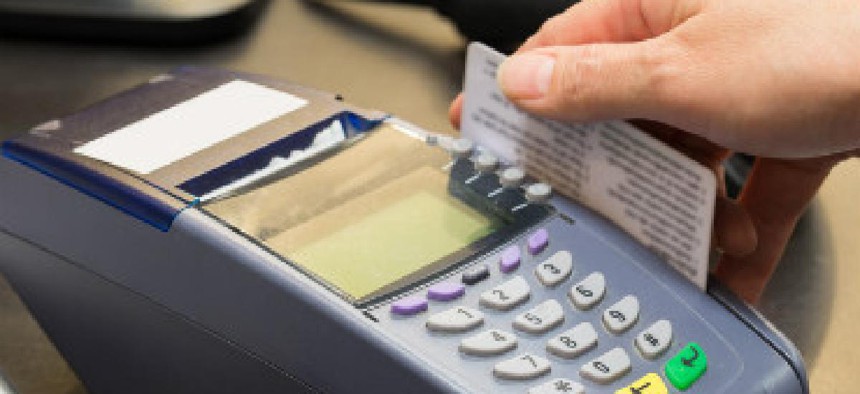Health IT office CIO, USDS hiring, chip-and-PIN cards and more

News and notes from around the federal IT community.

GSA expects to issue more than 1 million chip-and-PIN cards under its SmartPay program this year.
Health IT office names first chief health information officer
Dr. Michael James McCoy is joining the Office of the National Coordinator for Health IT as its first chief health information officer.
Karen DeSalvo, who serves as the national coordinator for health IT and acting assistant secretary for health, announced the news in an email message. McCoy will lead efforts to develop the agency's clinical policy for standards and regulations and serve as an in-house expert on health IT interoperability.
McCoy is an obstetrician/gynecologist by training and has more than 20 years of clinical practice. His IT background includes work as the health IT specialist at the American College of Obstetricians and Gynecologists.
Want to work at the U.S. Digital Service?
The U.S. Digital Service team includes the lead developer of Google Chrome, the third engineer ever hired at Amazon and the former operations director at Twitter, among many others. Now USDS Administrator Mikey Dickerson is looking for more technologists to join the team.
"We are recruiting talented professionals like these to form Digital Service teams throughout the government," Dickerson wrote in a blog post. "We are partnering with dedicated public servants to embed these teams into agencies where they can gain traction on mission-critical problems that have the most impact on everyday people."
Until now, USDS had been relatively quiet about its plans since its launch last August.
"We kept quiet for a while to see if our ideas proved out, but now it is time to go bigger," Dickerson wrote. "We need more technologists to join us."
GSA rolls out chip-and-PIN cards
The General Services Administration has begun offering chip-and-PIN smart cards under its SmartPay program and expects more than 1 million cards to be issued this year. Officials said the cards can be used at many merchants that don't have chip-and-PIN terminals.
The enhanced security cards stem from President Barack Obama's October 2014 executive order requiring the federal government's credit, debit and other payment card programs, including GSA's SmartPay, to take the lead in strengthening the security of financial transactions and encourage adoption of safeguards through technologies such as chip-and-PIN cards and transaction terminals.
The cards, which are common in Europe, combine an onboard computer chip with a PIN number to secure financial transactions. The technology is seen as superior to the magnetic stripe cards commonly used in the U.S.
Agencies shifting to high-bandwidth services
The demand for bandwidth at federal agencies is growing rapidly, according to the General Services Administration commissioner who oversees the Networx telecommunications contract.
Mary Davie, assistant commissioner of the Office of Integrated Technology Services, said agencies are shifting to more high-bandwidth telecom services under Networx. In a Jan. 20 blog post reviewing overall Networx spending by federal buyers, she wrote that agencies are dropping digital signal hierarchy services in favor of Ethernet-based services.
In fiscal 2014, the inventory of DS1 services (1.5 megabits/sec) remained flat, but the inventory of 200 to 500 megabits/sec Ethernet services was up more than 150 percent compared with fiscal 2013, she said. The agency expects the trend to continue.
NEXT STORY: IT contracts: Handling the handoff


